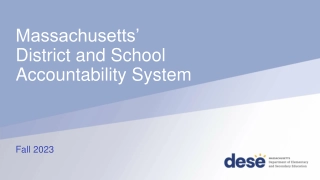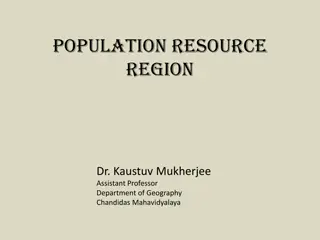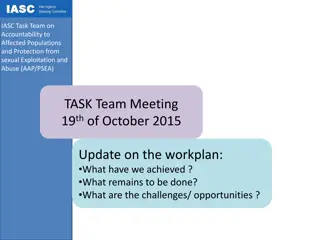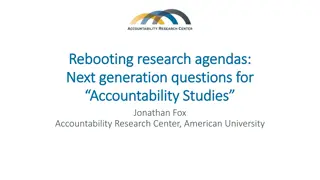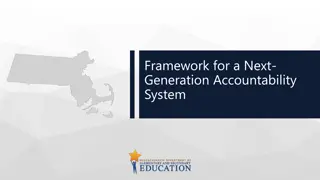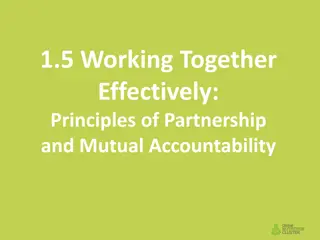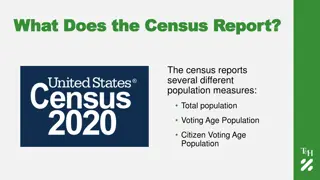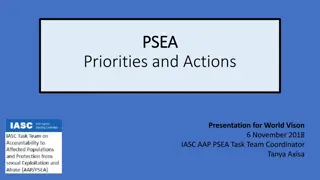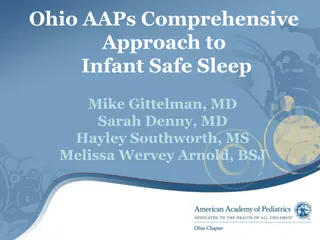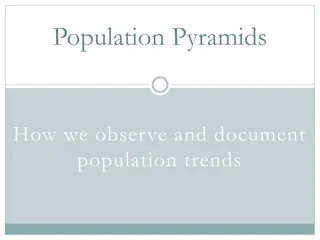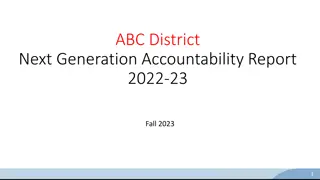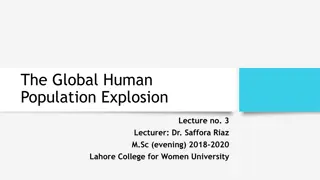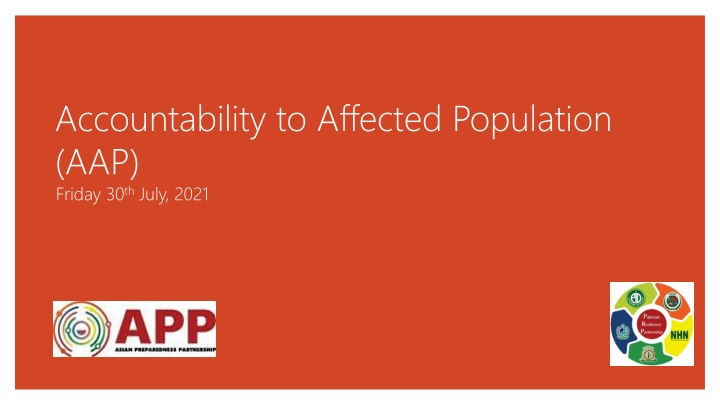
Accountability to Affected Populations (AAP) in Humanitarian Response
Accountability to Affected Populations (AAP) is a crucial commitment in humanitarian work, involving actively considering, involving, and being accountable to the people organizations aim to help. This includes giving communities a say in decision-making, transparently sharing information, and ensuring accountability for actions taken.
Download Presentation

Please find below an Image/Link to download the presentation.
The content on the website is provided AS IS for your information and personal use only. It may not be sold, licensed, or shared on other websites without obtaining consent from the author. If you encounter any issues during the download, it is possible that the publisher has removed the file from their server.
You are allowed to download the files provided on this website for personal or commercial use, subject to the condition that they are used lawfully. All files are the property of their respective owners.
The content on the website is provided AS IS for your information and personal use only. It may not be sold, licensed, or shared on other websites without obtaining consent from the author.
E N D
Presentation Transcript
Accountability to Affected Population (AAP) Friday 30thJuly, 2021
What is Accountability to Affected Populations (AAP) Accountability to affected populations is an active commitment to use power responsibly by taking account of, giving account to, and being held to account by the people humanitarian organizations seek to assist.
What is Accountability to Affected Populations (AAP) Brief Overview Giving communities influence over decision making in a way that accounts for their diversity, and allow views of the most at risk to be equally considered. Giving opportunities to assess and if appropriate sanction your actions communities the Being Held to Account Taking Account Giving Account Transparently sharing communities and effectively information with
Taking Account Taking Account Giving communities meaningful influence over decision making in a way that is: Inclusive; Non-discriminatory; and Accounts for the diversity of the communities. Organizations and humanitarian actors need to incorporate this feedback into their strategies and into their responses to a crisis!
Giving Account Giving Account Information sharing in an effective and transparent way across communities What kind of information? Agencies and their roles and responsibilities Entitlements and targeting criteria How to provide feedback or raise complaints
Being Held to Account Being Held to Account Ensuring communities have the opportunity to assess and, where feasible, alter or sanctionhumanitarian actors actions. Consulting communities on what they think about the quality of the response Involving communities in the monitoring of programmes Incorporating communities views on success and impact of intervention in any evaluation
A note on Sexual Exploitation and Abuse A note on Sexual Exploitation and Abuse Sexual Exploitation and Abuse (SEA): When in connection with aid provision is the most serious breach of accountability. Populations should be able to: Raise complaints Call for appropriate measures against such abuse Be informed of the results of investigations on these complaints
Making AAP Operational Making AAP Operational Assessment/ evaluation Project Design Monitoring Implementation
Assessment Phase Assessment Phase Assessment Planning Assessment 1 1 Include AAP in job descriptions, staff development, appraisal mechanisms Invite representatives of local community to participate in the assessment Allow for separate and confidential discussions with different community groups (women, children, elderly, disabled) Discuss needs and priorities of community groups 2 2 Inform local communities well before assessment takes place 3 3 Ensure communications are translated into local languages and adequate interpretation support exists 4 Implement feedback mechanisms; inform populations how they function 4 Gain understanding of the local culture, customs and beliefs
Project Design Phase Project Design Phase Share assessment findings with community, local authorities, and the cluster Ensure assessment results are used in design of projects Involve local community in project design If recruiting additional staff locally, advertise openly
Project Implementation Phase Project Implementation Phase Invite representatives of local community groups for developing criteria for selection of beneficiaries Inform about and implement complaints and response mechanism Use feedback mechanisms Form a committee of local community representatives Inform local communities in advance of date and location distribution, security allowing
Project Monitoring Phase Invite local community representatives to take part in the monitoring process Share and discuss findings with local communities Adjust project design according to community feedback
All Phases (Mainstreaming) All affected populations have access (physical, cultural) to planning, design, implementation, and monitoring phases Affected populations have opportunity to register complaints, provide feedback and get a response during all phases
IASC Commitments on Accountability to Affected People (AAP) and Protection from Sexual Exploitation and Abuse (PSEA) 4 1 Action Results Leadership 3 2 Information, feedback and Participation and Partnership
Leadership Leadership must demonstrate their commitment to AAP and PSEA by; Enforcing, Institutionalizing and Integrating AAP approaches in the Humanitarian Program Cycle and strategic planning processes Establishing appropriate management systems to solicit, hear and act upon the voices and priorities of affected people in a coordinated manner, including for SEA, before, during and after an emergency.
Participation and Partnership Adopt agency mechanisms that feed into and support collective/coordinated people-centred approaches that enable women, girls, boys, men, including the most marginalized and at-risk people among affected communities, to participate in and play an active role in decisions that will impact their lives, well-being, dignity and protection. Adopt and sustain equitable partnerships with local actors to build upon their long-term relationships and trust with communities.
Information Feedback and Action Adopt agency mechanisms that feed into and support collective and participatory approaches that inform and listen to communities, address feedback and lead to corrective action. Establish and support the implementation of appropriate mechanisms for reporting and handling of SEA-related complaints. Plan, design and manage protection and assistance programmes that are responsive to the diversity and expressed views of affected communities.
Results Measure AAP and PSEA related results at the agency and collective level, including through standards such as the Core Humanitarian Standard and the Minimum Operating Standards on PSEA; the Best Practice Guide to establish Inter-Agency Community-Based Complaint Mechanisms (CBCM) and its accompanying Standard Operating Procedures.
Discussions Question/ Answers

